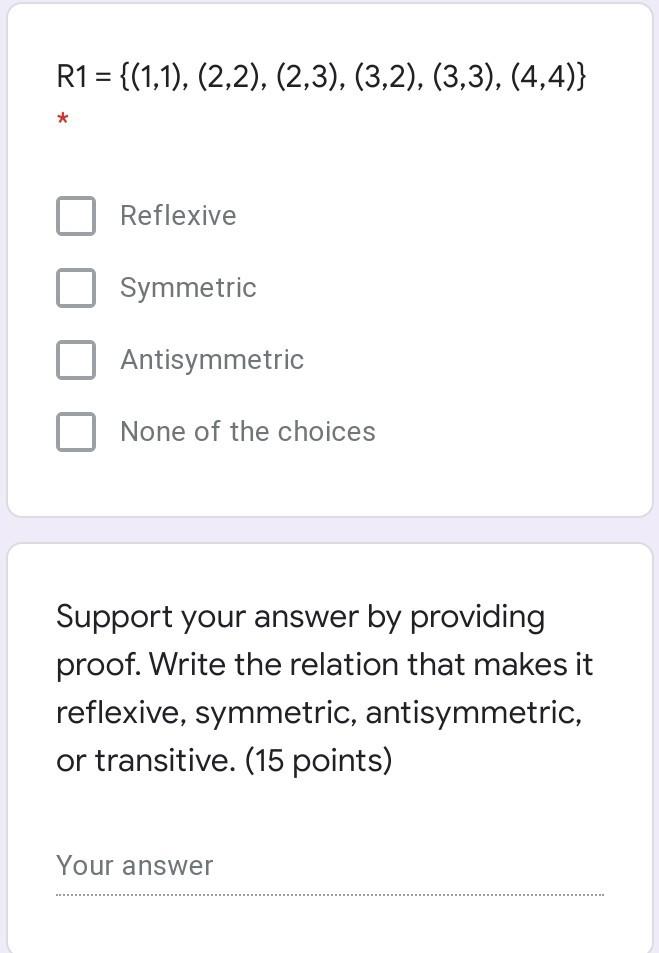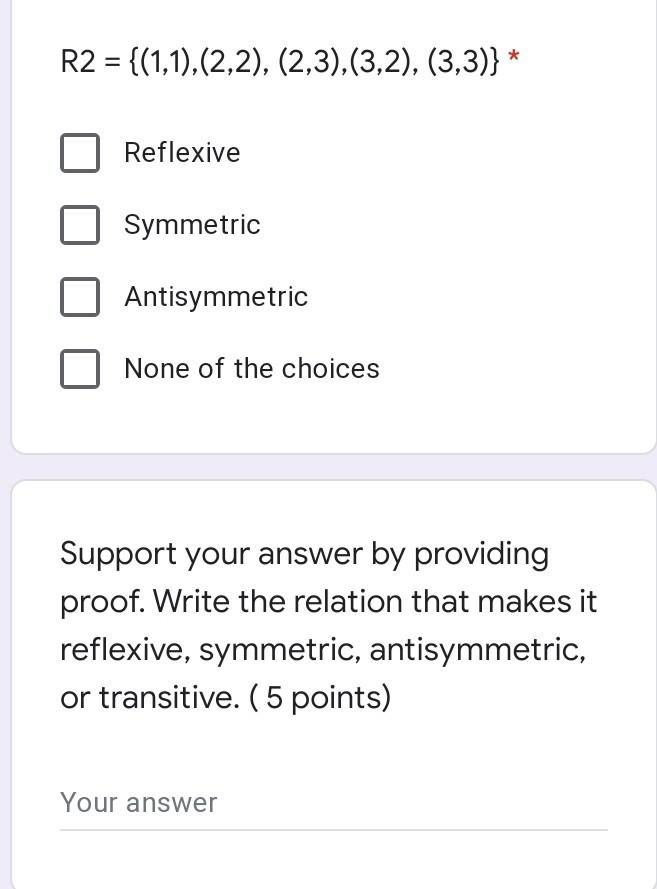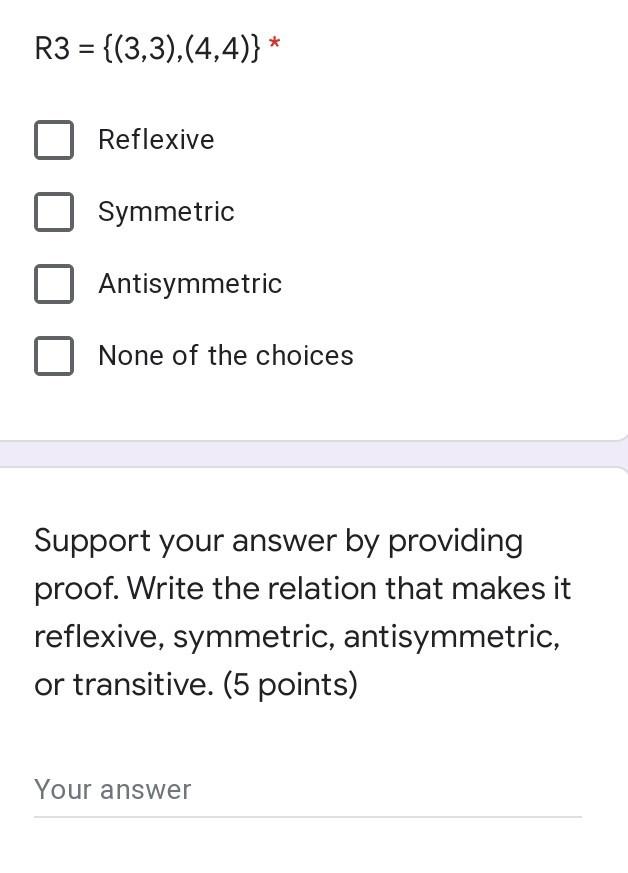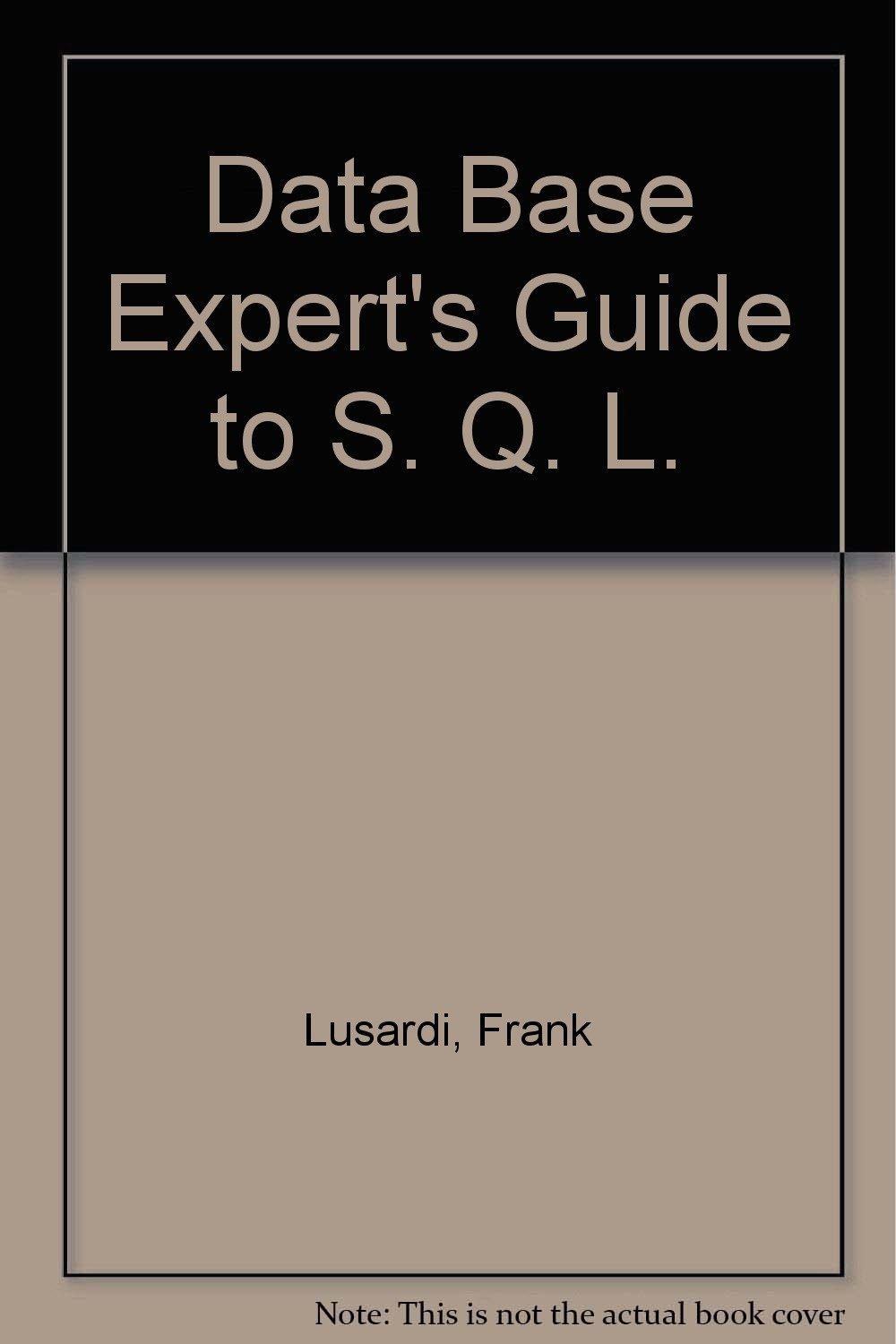Answered step by step
Verified Expert Solution
Question
1 Approved Answer
need help plsss thank you R1 = {(1,1), (2,2), (2,3), (3,2), (3,3), (4,4)} * Reflexive Symmetric Antisymmetric None of the choices Support your answer by



need help plsss thank you
R1 = {(1,1), (2,2), (2,3), (3,2), (3,3), (4,4)} * Reflexive Symmetric Antisymmetric None of the choices Support your answer by providing proof. Write the relation that makes it reflexive, symmetric, antisymmetric, or transitive. (15 points) Your answer R2 = {(1,1),(2,2), (2,3),(3,2), (3,3)} * Reflexive Symmetric Antisymmetric None of the choices Support your answer by providing proof. Write the relation that makes it reflexive, symmetric, antisymmetric, or transitive. (5 points) Your answer R3 = {(3,3),(4,4)} * Reflexive Symmetric Antisymmetric None of the choices Support your answer by providing proof. Write the relation that makes it reflexive, symmetric, antisymmetric, or transitive. (5 points) YourStep by Step Solution
There are 3 Steps involved in it
Step: 1

Get Instant Access to Expert-Tailored Solutions
See step-by-step solutions with expert insights and AI powered tools for academic success
Step: 2

Step: 3

Ace Your Homework with AI
Get the answers you need in no time with our AI-driven, step-by-step assistance
Get Started


